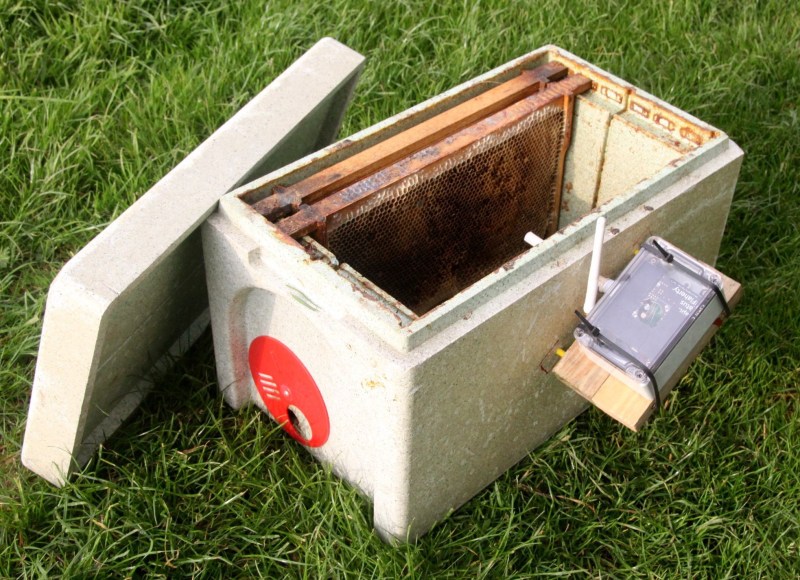In the bustling world of bees, swarming is the ultimate game of real estate shuffle. When a hive gets too crowded or craves a change of scenery, colonies scout out swarms for a new hive. [Captain Flatus O’Flaherty] is a beekeeper trying to capture more native honey bees, and a custom LoRa-enabled capture hive helps him do that.
A catch hive, perched high and mighty, lures scouting as potential new homes. If selected, a swarm of over a thousand bees can move in, where [Flatus]’s detector comes in. Many catch hives are scattered around, and manually checking them is difficult. While the breath of one bee is hard to see, a thousand bees produce enough CO2 to be detected by a sensor. A custom PCB with a solar-powered +30dB LoRa radio measures CO2 and reports back. The PCB contains an ESP32 D4 and a 1-watt Ebyte E22-400M30S LoRa module. If the CO2 levels are still elevated at nightfall, [Flatus] can be pretty confident a swarm has moved in.
Using the data collected, he massaged it to create a dataset suitable for training on XGBoost. With weather data and other conditions, the model tries to predict when a swarm is more or less likely to happen. Apis Mellifera (the local honeybee around [Flatus]) loves sun-kissed, warm, humid afternoons with little wind.
We’ve seen beehive monitors before and love exploring what the data could be used for—video after the break.



















Congrats, it’s an original project.
I wonder why a 1W module has been chosen. Pictures of the installation show an antenna on a wooden pole. So getting enough height should be no problem here.
The range and power consumption might be improved by using a standard 20dBm module and a properly tuned antenna.
Also check your local restrictions about use of the frequency bands. Many countries won’t allow you to transmit at 1W around 433MHz without a proper license.
Flatus detector getting Mythbusters vibes here.
‘Captain Flatus O’Flaherty’ …… obviously a false name. How can this guy win a prize in the competition with a name like that?
I have a vewy good fwiend in wome named O’Flahewty…
That’s a very cool piece of equipment. I could really use something like that, to assist in catching bee swarms, so I’m not constantly opening swarm traps.
I’ve been using LoRa enabled sensors for several years now in my hives for monitoring temperature and weight. Dragino makes some very affordable sensors. Temperature would be an alternate way of detecting that a swarm moved in. LoRa has the benefit of long range. An NB-IoT sensor would work well in remote areas where LoRa might not be practical.